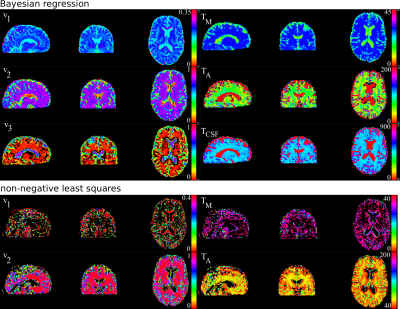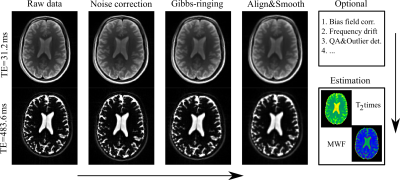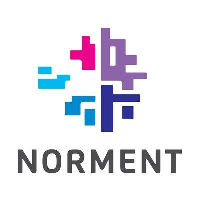Ivan Maximov1,2, Oliver Geier3, Elias Kellner4, Helle Pfeiffer3, Valerij G Kiselev4, and Marco Reisert4
1Western Norway University of Applied Sciences, Bergen, Norway, 2NORMENT, University of Oslo, Oslo, Norway, 3Oslo University Hospital, Oslo, Norway, 4University Medical Center Freiburg, Freiburg, Germany
1Western Norway University of Applied Sciences, Bergen, Norway, 2NORMENT, University of Oslo, Oslo, Norway, 3Oslo University Hospital, Oslo, Norway, 4University Medical Center Freiburg, Freiburg, Germany
Myelin water imaging pipeline
Bayesian regression for a fast myelin water imaging

Figure 3
The resulting scalar maps obtained from the Bayesian regression and non-negative least squares approach. In Bayesian algorithm: v1 is the myelin
water fraction, v2 and v3 are the fractions of
intra- and extra-axonal water and contamination by CSF, respectively.
The relaxation times are presented by TM, TA,
and TCSF, respectively.

Figure 1
Algorithmic workflow of the optimised pipeline. The pipeline consists
of four steps: noise correction of T2 weighted images, Gibbs-ringing
correction, normalisation and smoothing of all volumes, and finally
estimation of myelin water fraction. Other possible correction steps
are marked as “optional”.
